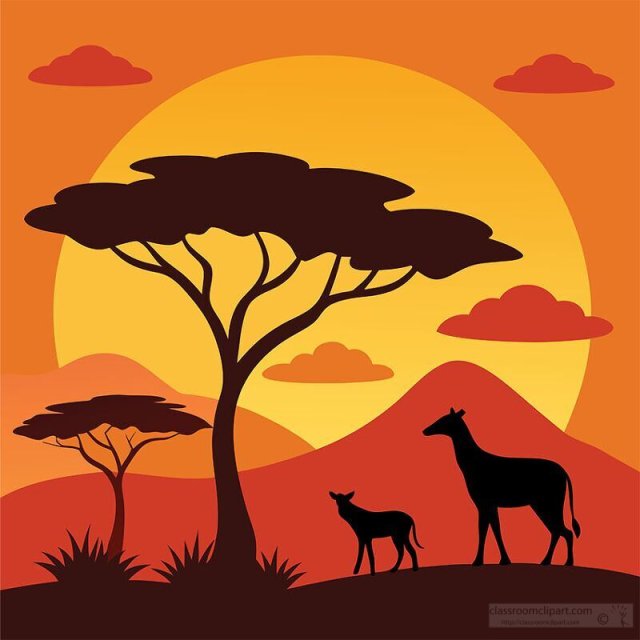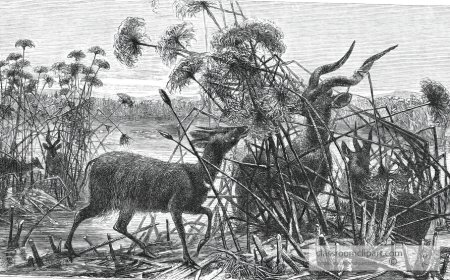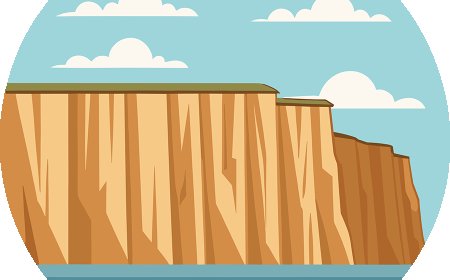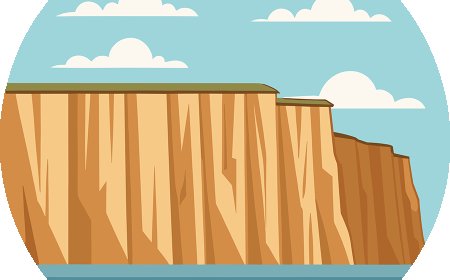Savannas for Kids: Fun Facts, Animals, and Why They Matter
Explore savannas in this kid-friendly guide. Learn about savanna animals, plants, climate, and why these grasslands are important.

🌿🦒 Savannas: The Grasslands with Scattered Trees
🌼 Introduction
Savannas are warm grasslands dotted with trees and shrubs. They are known for their huge herds of grazing animals, like zebras and antelope, and their famous predators, like lions and cheetahs. Savannas have wet and dry seasons, making them unique compared to other grasslands.
In this article, you’ll learn what savannas are, where they are found, what plants and animals live there, and why they are important to people and the planet.
🧬 What Is a Savanna?
A savanna is a tropical or subtropical grassland with scattered trees.
Main Features:
Warm temperatures all year (often between 70–90°F or 21–32°C).
Distinct wet and dry seasons.
Frequent fires that help grasses grow and keep trees from taking over.
🌍 Where Are Savannas Found?
Savannas cover large areas around the world, especially near the Equator.
Major savanna regions include:
Africa: Serengeti in Tanzania and Kenya (the most famous savanna).
Australia: Northern parts with eucalyptus trees.
South America: Brazilian cerrado and llanos in Venezuela.
India: Tropical grasslands with acacia trees.
African savannas are the most well-known because of their incredible wildlife.
🌿 Plants of the Savanna
Savannas are covered mostly in grasses and scattered trees.
Common plants include:
Acacia trees, which have flat tops and thorns.
Baobab trees, which can store water in their thick trunks.
Elephant grass, which can grow over 10 feet tall.
Many wildflowers that bloom in the rainy season.
These plants survive droughts, fires, and grazing animals.
🦓 Animals of the Savanna
Savannas are home to some of the world’s most famous animals. Many animals migrate to find water during the dry season.
| Herbivores (plant-eaters): | Carnivores (meat-eaters): | Birds and Insects: |
|
Elephants Giraffes Zebras Antelope Wildebeest |
Lions Cheetahs Hyenas Leopards |
Ostriches Secretary birds Termites (build giant mounds) Vultures |
🌦️ Climate of Savannas
Savannas have two main seasons:
Wet Season:
Heavy rain falls for a few months.
Plants grow quickly, and animals have plenty of food.
Dry Season:
Lasts much of the year.
Grass turns brown, and many rivers dry up.
Fires are common and help recycle nutrients.
🌍 Why Are Savannas Important?
Savannas are essential because they:
Support thousands of species of plants and animals.
Provide grazing land for livestock.
Store carbon, helping slow climate change.
Are important for tourism, which helps local economies.
🛑 Threats to Savannas
Savannas face many threats:
Overgrazing by farm animals.
Farming and development that destroy habitat.
Climate change, making droughts longer.
Poaching, which harms animal populations.
🌱 How Can We Help?
We can help protect savannas by:
Supporting wildlife conservation groups.
Learning about endangered species.
Using products that don’t harm savanna habitats.
Protecting parks and reserves.
✨ Interesting Facts About Savannas
- Savannas cover about 20% of the Earth’s land surface.
- The African savanna is home to the “Big Five”: lions, leopards, elephants, buffalo, and rhinos.
- Baobab trees can live more than 1,000 years.
- Termites in savannas build mounds taller than people.
- Many savanna animals migrate hundreds of miles each year.
- Fires in the savanna are natural and help plants regrow.
- Giraffes are the world’s tallest animals and only live in African savannas.
📝 Kid-Friendly Summary
Savannas are warm grasslands with scattered trees. They are famous for animals like lions, elephants, and zebras. Savannas have rainy and dry seasons. These habitats help the planet by storing carbon and providing homes for wildlife. But they are in danger from farming, overgrazing, and climate change. We can help by learning more and protecting these amazing places.
🧠 Vocabulary Words
Savanna A warm grassland with scattered trees.
Herbivore An animal that eats plants.
Carnivore An animal that eats meat.
Migration Traveling to find food or water.
Drought A long period with little or no rain.
Overgrazing When animals eat too much grass, harming the land.
Poaching Illegal hunting of animals.
Biodiversity The variety of life in an area.
Carbon Storage Holding carbon in soil and plants to slow climate change.
Ecosystem A community of living things and their environment.





















































